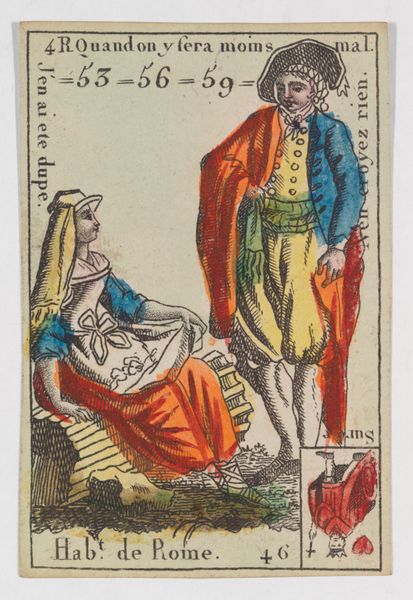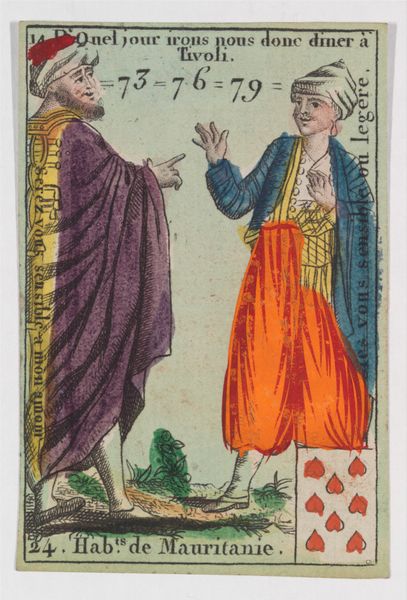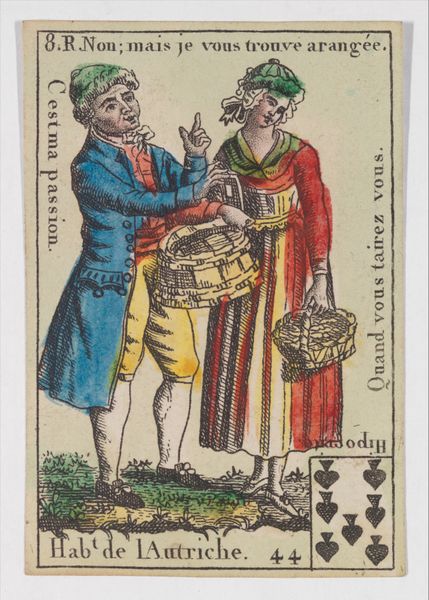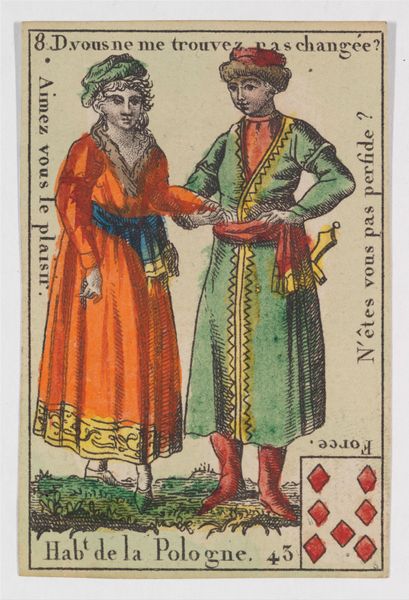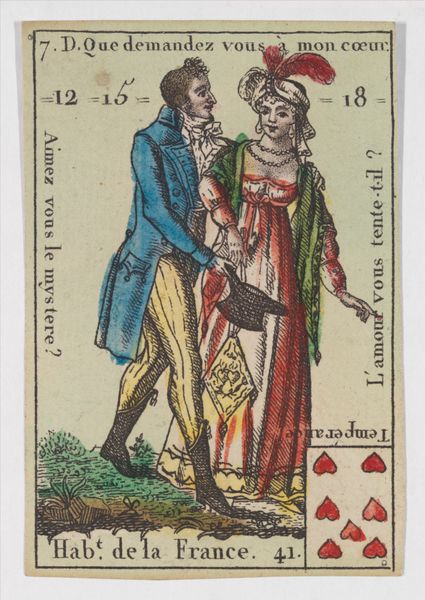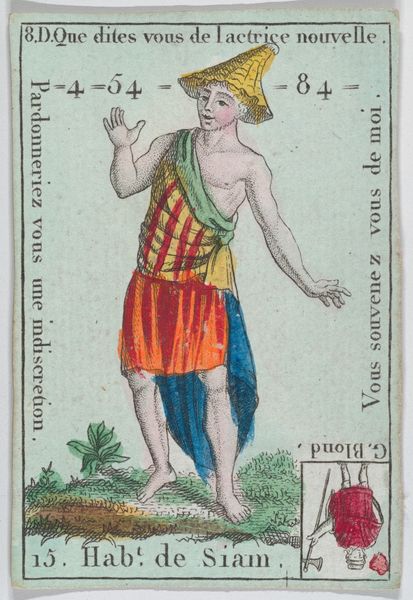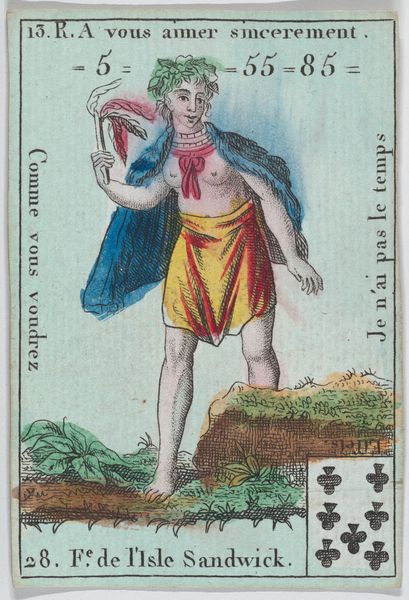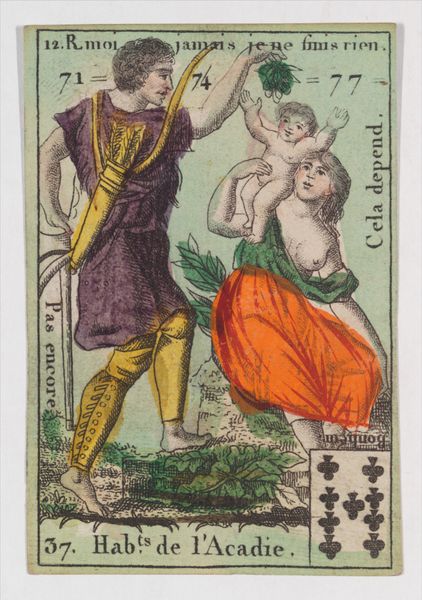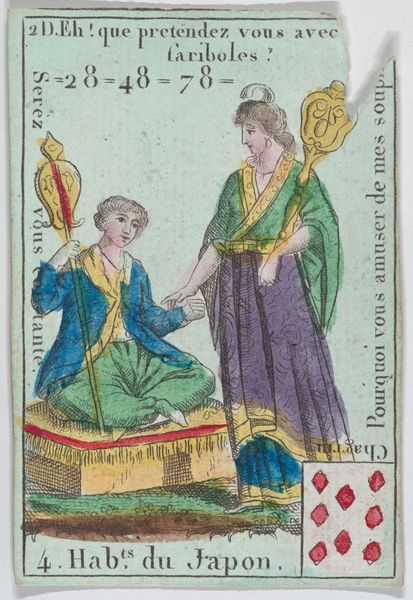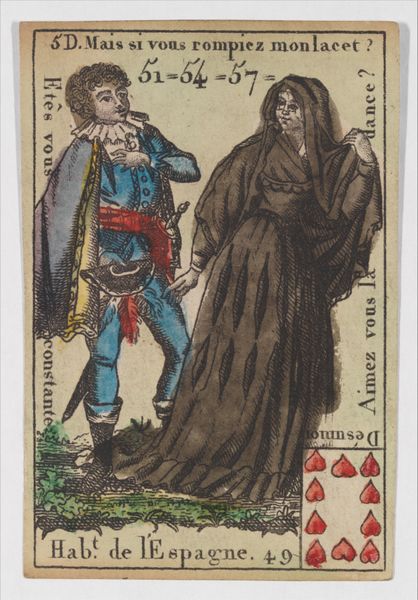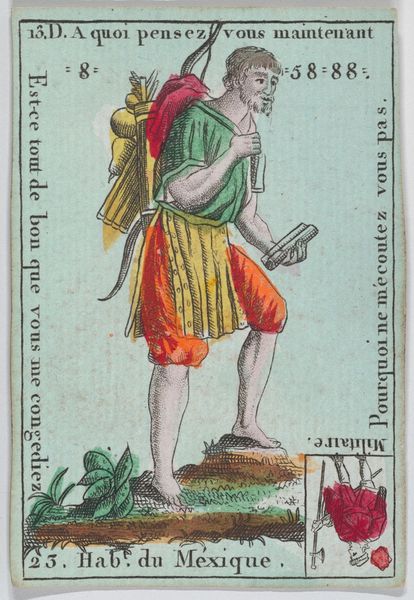
Hab.ts de la Georgie from playing cards "Jeu d'Or" 18th century
0:00
0:00
drawing, coloured-pencil, print, etching, engraving
#
drawing
#
coloured-pencil
# print
#
etching
#
ukiyo-e
#
coloured pencil
#
orientalism
#
genre-painting
#
history-painting
#
engraving
Dimensions: 3 3/16 × 2 1/16 in. (8.1 × 5.3 cm)
Copyright: Public Domain
Editor: Here we have "Hab.ts de la Georgie from playing cards 'Jeu d'Or'," an 18th-century print, etching, engraving, and drawing by an anonymous artist, currently at the Metropolitan Museum of Art. It has the feel of something quite exotic because of the figures’ dress, almost theatrical in its presentation. How do you interpret this work through the lens of its formal qualities? Curator: From a formalist perspective, I observe a strong emphasis on line and color. Note how the linear quality of the etching and engraving defines the forms and delineates intricate details in the figures' garments. The palette, though limited, exhibits a deliberate application of color washes within these etched boundaries. Consider how the artist uses the interplay of these colors to create contrast, such as the bold orange and yellow against the muted purple of the seated figure's robes. What is the effect? Editor: Well, the strong contrasts certainly bring the figures forward and create a visual hierarchy, leading the viewer's eye through the composition. I'd say that the interplay makes it rather appealing and exotic, which must have been the goal. Curator: Precisely. And it's equally important to note the spatial organization. The artist uses a shallow picture plane, flattening the perspective and focusing attention on the surface patterns and decorative elements, thus negating any illusion of depth. Editor: That’s interesting. I hadn’t considered the flattening effect before, but I see how it contributes to the almost symbolic quality of the image. Thanks for pointing out that crucial component. Curator: My pleasure. A close examination of the composition and its formal properties allows us a structured understanding that extends beyond mere subject representation. We look closer, think harder, and see things that aren't immediately apparent, such as its flattened perspectives or use of contrasting colors.
Comments
No comments
Be the first to comment and join the conversation on the ultimate creative platform.

